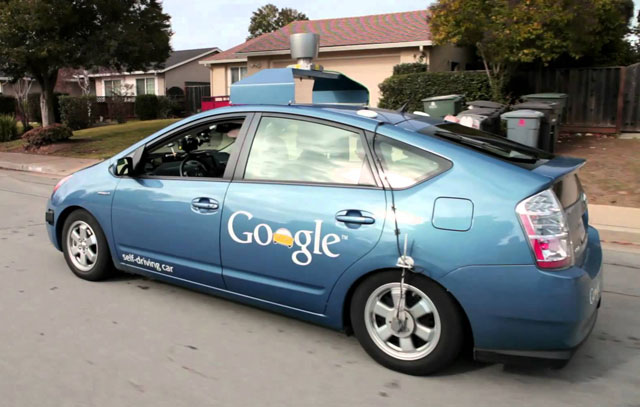 Very soon — much sooner than you think — your car will drive itself. While you chat on the phone, work on your laptop, read or even sleep, your car will drive you wherever you need to go. In fact, in a decade or two, your car probably won’t even have a steering wheel or pedals.
Very soon — much sooner than you think — your car will drive itself. While you chat on the phone, work on your laptop, read or even sleep, your car will drive you wherever you need to go. In fact, in a decade or two, your car probably won’t even have a steering wheel or pedals.
Self-driving cars may still sound like science fiction, but since September 2014, Google’s “autonomous vehicles” have driven more than 2m kilometres — the majority of them on public roads. These cars can stop at traffic lights, negotiate busy intersections during morning traffic and avoid obstacles (including other cars), all without any input from their human passengers.
But surely this can’t be safe? Putting your life, or your family’s lives, at the mercy of some half-baked software sounds like madness. What if it miscalculates something and drives you head-on into a bus?
And indeed, the software does sometimes fail. In a recent report to California’s department of motor vehicles, Google admitted that drivers of test vehicles were forced to take control 272 times over 678 929km.
That sounds bad, right? On average, every 2 500km or so, a specially trained test driver had to take the wheel to avert disaster. Except that, actually, only 13 of those times would have resulted in “contact” with other vehicles, people or objects. Two of those objects were traffic cones, and only one was a person. So it’s really more like 60 000km per significant incident.
Compared to the average rate of car accidents, even in a place like California, this is extremely low. The incident rate has also dropped sharply over the testing period as the software has learned and improved.
But Google is painfully aware of how important it is to win the PR battle here. Most people are utterly convinced that they will do a better job of driving their car than any computer ever could. Self-driving cars need to be virtually faultless if they are to succeed. The weight of that prejudice will only be lifted once they have proved themselves in the wild.
But the data does not lie. Over a million people die worldwide every year as a result of traffic accidents. Humans have been driving for more than 100 years and if anything appear to be getting worse at it. In just four years, Google’s cars have improved their ability to navigate tricky situations by 670%, going from an incident every 1 256km in early 2014 to one every 8 508km in late 2015.
And Google is hardly the only company working on this technology. All of the world’s major motor manufacturers have projects in the pipeline. Elon Musk, the genius behind the Tesla Motor Corporation, is speaking confidently about having self-driving cars on the road within a decade.
But why would we even want robot cars speeding around on our roads? Simple: by automating cars, we remove enormous amounts of friction from the whole system. Self-driving cars don’t speed or jump red lights. They don’t block intersections, or ride up people’s backsides.

Self-driving cars need far less space on the road, so the same highway can safely carry twice as many cars. And because they are connected to an intelligent network, they can help to regulate traffic.
And above all, self-driving cars would free up humans to do something enjoyable or productive with the time spent commuting. Imagine being able to watch a movie on your way to your holiday at the coast, instead of staring grimly at the highway for seven or eight hours.
Does this mean the end of all human-driven cars? Of course not. But they will become like horses are for us today. What was once a ubiquitous form of mass transportation will become a leisure activity.
How long will all this take to happen? I estimate that within five years there will be a more than 100 000 self-driving cars on roads in the US. Within 10 years, that number will climb to over 5m. Within 20 years, they will outnumber ordinary cars on roads in both the US and Europe.
The developing world will take longer to adopt and adapt to this trend, but within most of our lifetimes, self-driving cars will be the norm here as well. And if you disagree, remember the prosperous horse merchants of Manhattan who laughed at the “horseless carriage” and dismissed it as a fad. — (c) 2015 NewsCentral Media




